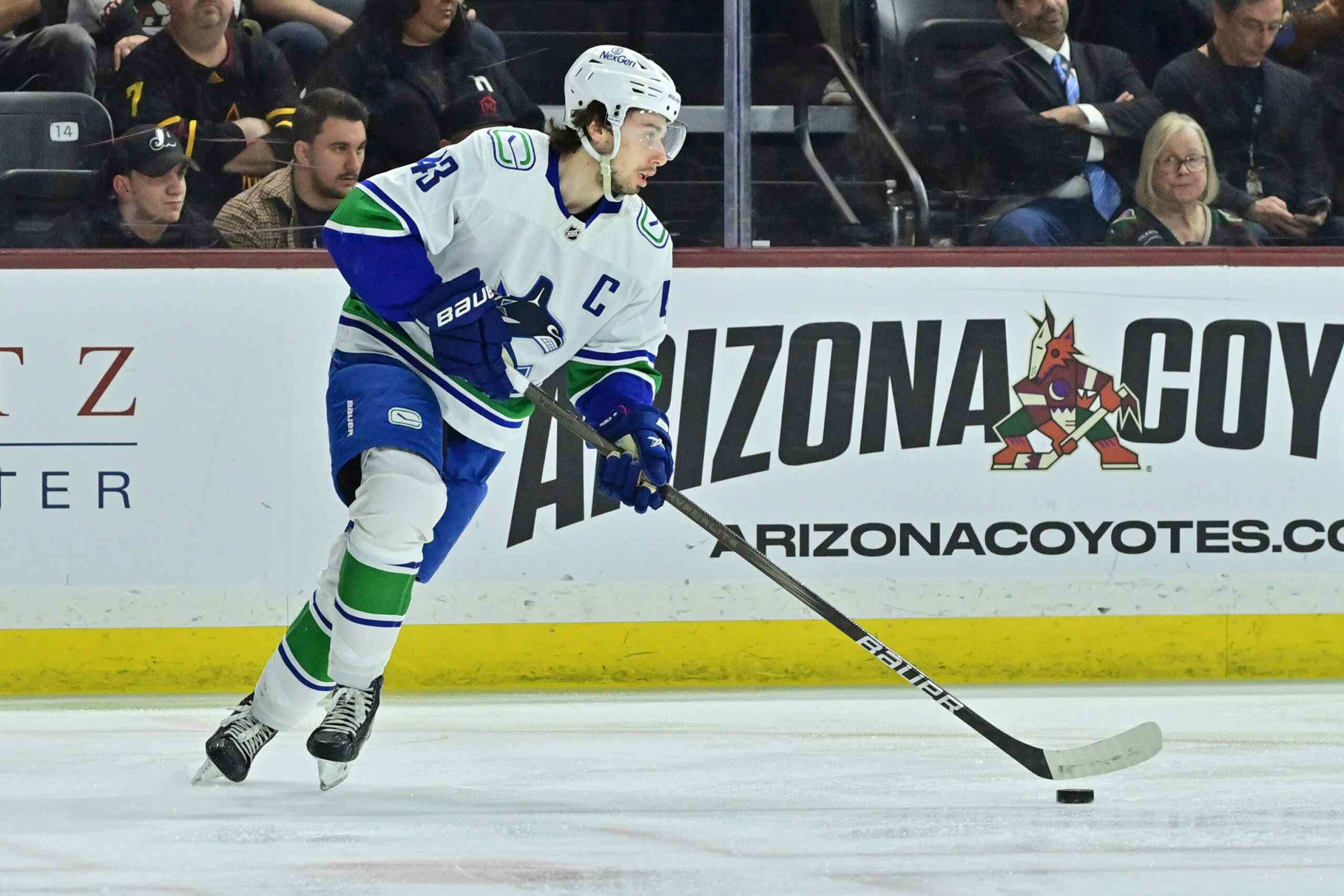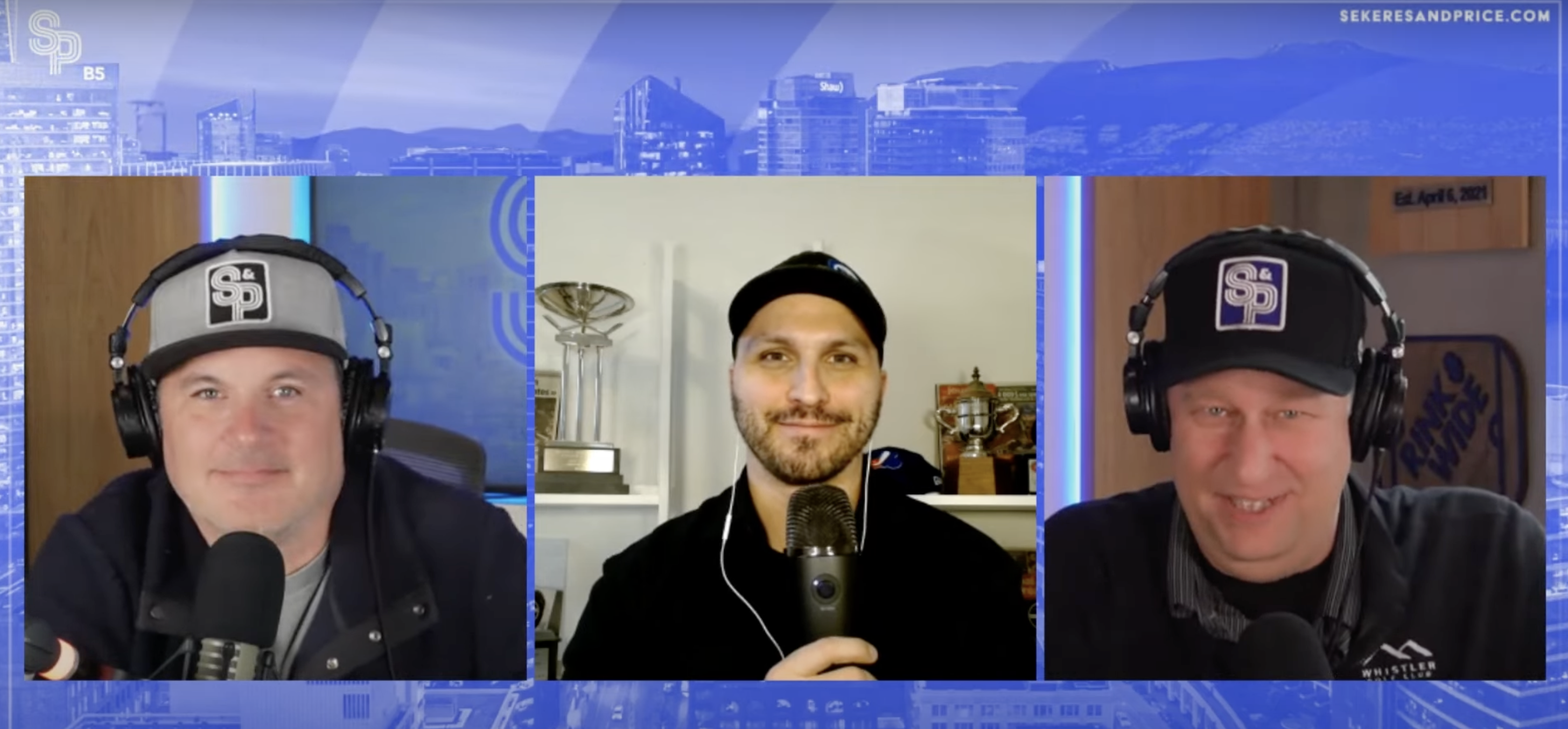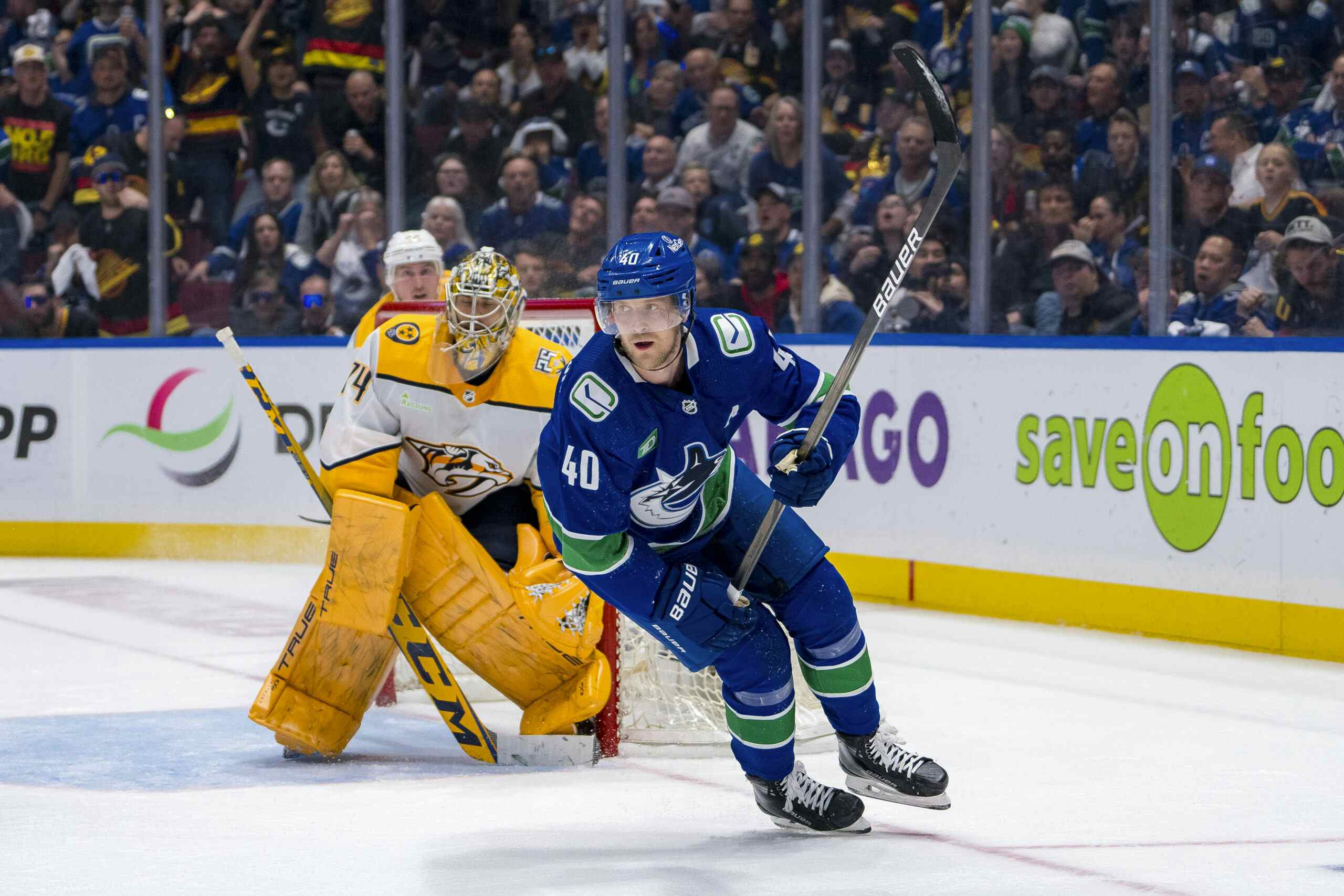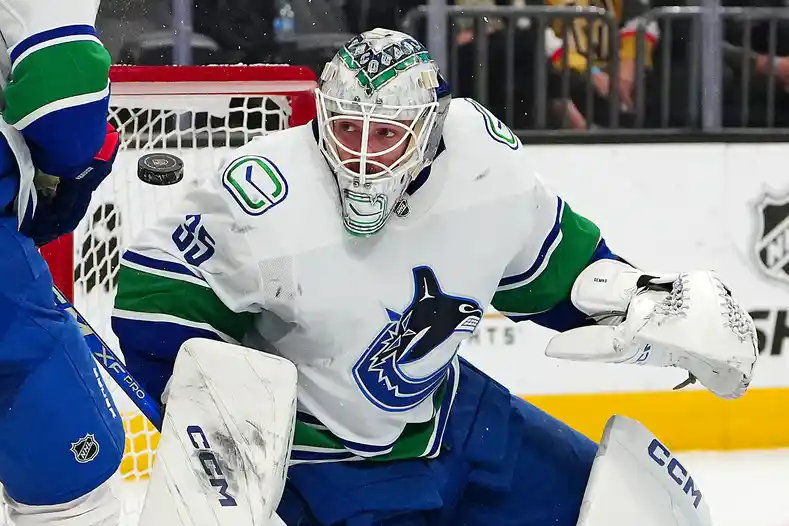Offseason Transactions Deep Dive: The Ryan Kesler Trade
If it feels like it has been quite some time since the frenzy of moves the Vancouver Canucks made in that hectic stretch bridging the end of June and beginning of July, it’s because it has been. With the summer now officially having been put in the rearview mirror as training camps are set to begin across the league, we’re running a 5-part series reviewing what the Canucks did this summer, and what it means for them moving forward.
This deep dive was executed by the excellent MoneyPuck_ on Twitter, who has contributed content for us in the past.
The new regime went into the offseason with a seemingly unrealistic set of objectives: get younger and improve the prospect pool, but having to do so while still keeping a close eye on improving depth at forward and getting back to being a playoff team. While it remains to be seen whether their efforts will have ultimately been fruitful in this regard, the Ryan Kesler trade was the biggest move towards addressing these areas of concern.

Ryan Kesler
Ryan Kesler was most certainly the centerpiece of the trade, but it bears repeating that he’s no longer the 73 point Selke winner he was in 2010-11 (and quite frankly hasn’t been in some time). A look at where Ryan Kesler ranks versus other centers in a number of key categories over the past three seasons highlights this:

Despite receiving ice time consistent with that of a first-line center – and generating first-line shot totals in that time – his production has been more along the likes of what you’d expect from a second or third line center since 2012. Furthermore, he has greatly benefited from having the luxury of playing next to the Sedins, who remain amongst the league’s elite possession players, in recent years. Without them, it’d be fair to say he takes something of a tumble:

While many fans may think the 43-point season Kesler is coming off of was an anomaly, but when looking at his statistics there doesn’t exactly appear to be any smoking gun which would indicate he’ll rebound significantly in Anaheim:

There was a time where Kesler was one of the league’s top centers, but based on his recent play, the name recognition that bought him appears to be exceeding the value he actually presents to the team he’s playing for.
When considering what the Canucks received in return for Kesler, it’s important to keep his decline in mind, as well as the lack of leverage the Canuck’s had in negotiations because of the limited number of trade partners that Kesler would consider waiving his no-trade clause to move to.
When considering what the Canucks received in return for Kesler, it’s important to keep his decline in mind, as well as the lack of leverage the Canuck’s had in negotiations because of the limited number of trade partners that Kesler would consider waiving his no-trade clause to move to.
Nick Bonino
Nick Bonino had his breakout season at the age of 26 last year. He’ll likely replace Kesler as the Canucks second line center next season, so it’s worth taking a look at how the two players stack up to each other in some key areas:

While there’s no doubt that Bonino benefited greatly from white-hot shooting percentages in ’13-’14, he also outscored Kesler both at even strength and on the power play despite receiving significantly less minutes in each situation. They had comparable roles on the power plays for their respective teams, as Bonino was the Duck’s third forward behind Corey Perry and Ryan Getzlaf, while Ryan Kesler earned the most ice time on the first power play unit with the Sedins.
Like the Canucks, the Ducks power play likewise significantly underperformed last year – the Ducks ranked 22nd, while Canucks ranked 26th – so the time Bonino spent with Perry and Getzlaf on the power play isn’t as big an advantage as you may think over Kesler’s time on the Vancouver power play with the twins.
It’s also worth noting that Bruce Boudreau chose to give Bonino significantly more power play time than the team’s (seemingly) higher pedigree prospects like Devante Smith-Pelly, Jakob Silfverberg, Emerson Etem and Rikard Rakell, all of whom Canucks fans surely wanted to see included as part of this trade.
Let’s look at the impact each player had on their teammates:
Let’s look at the impact each player had on their teammates:

As was discussed above, Kesler proved this year that when not playing with the Sedin’s he’s closer to an average possession player than anything else. Part of this could be have to do with the players he was playing with in those situations – he was most commonly paired with Chris Higgins or Mike Santorelli, who aren’t exactly world beaters – but that said a 50% CF is really not what you would expect from a top of the line center, which is what he has been billed as.

Unlike Kesler, Bonino played with a ton of different players last year, most commonly Kyle Palmieri and Matt Beleskey. Palmieri and Beleskey were absolute anchors for Bonino from a possession standpoint, as his WOWYs show; he went from a 46% possession rate with them to a 50+% rate without. Bonino’s possession numbers when apart from Palmieri and Belesky were actually better than Kesler’s possession rates when he was without the Sedins, for whatever that’s worth.
One more interesting piece to note: Kesler played 3.2x more minutes with Daniel Sedin or Henrik Sedin last season than Bonino played with Perry or Getzlaf.
When considering the likely regression in Bonino’s on-ice shooting percentages and potentially reduced power play time in Vancouver once relegated to the second power play unit here, it’s probably unlikely he’ll exceed the 49 points he scored last year. That said, it’s unlikely that Kesler will either.
When considering the likely regression in Bonino’s on-ice shooting percentages and potentially reduced power play time in Vancouver once relegated to the second power play unit here, it’s probably unlikely he’ll exceed the 49 points he scored last year. That said, it’s unlikely that Kesler will either.
Luca Sbisa
In the best case scenario at 24, there’s still the potential for him to develop into the top-four defensemen that he was expected to become when he was drafted 19th overall. In the worst case scenario, he’s a bottom pair, or 7th defensemen who will challenge Ryan Stanton and Frank Corrado for ice time. If the worst case scenario plays out, he’ll definitely be overpaid at his $2.175M salary. However, he’ll also be an RFA next summer, so it’s not overly concerning if he doesn’t crack the top 4 this year.
There were those who criticized the inclusion of Sbisa in the trade on the grounds that the Canucks could pick up a defensemen of similar level of talent via free agency for a comparable cost, but here’s a list of the UFA defensemen signed this summer in the $1 million to $3 million AAV contracts, as compared to Sbisa:

Sbisa held his own statistically versus this group, and at the age of 24 still has significantly more upside.
This is a low risk, potentially high reward addition, but the real value here was in the added defensive depth that allowed Benning to move Jason Garrison in a move that eventually resulted in the Canucks being able to add Linden Vey from the Kings and open up significant cap space (which we’ll get to later on in this series).
This is a low risk, potentially high reward addition, but the real value here was in the added defensive depth that allowed Benning to move Jason Garrison in a move that eventually resulted in the Canucks being able to add Linden Vey from the Kings and open up significant cap space (which we’ll get to later on in this series).
24th Overall Pick (Jared McCann)
I’ll discuss Jared McCann in depth when in my review of the draft, but it’s safe to say this is a pick that has grown on me a lot since the draft. McCann wasn’t the player I wanted the Canucks to pick, but that doesn’t mean this wasn’t a good, solid, safe bet with a low risk of becoming a bust.
85th Overall Pick (Traded for Derek Dorsett)
One of the biggest surprises before the draft was that the salary cap would be $2M lower than expected as a result of the decline of the Canadian dollar over the past year. The New York Rangers were one of a number of teams that were forced to dish off useful players in order to sign their key players and remain under the cap, and the Canucks were more than willing to help by taking Derek Dorsett off their hands.
According to research done by Scott Cullen from TSN, historically 85th overall draft picks generally have only a 21% chance of playing 100 games in the NHL, so with that in mind it makes a lot of sense that the Canucks were willing to flip the pick for someone like Derek Dorsett.
Dorsett is one of those players that the old school guys love. He’s hard to play against, has guts, and he’s not afraid to get his nose dirty. Stats guys typically aren’t fans of these types of players, but as we learn to interpret data better, the value in Dorsett shows in the numbers as well.
One of the most interesting parts about watching Alain Vigneault coach in the playoffs this year was watching his deployment of the Dorsett – Dominic Moore – Brian Boyle line, because this paralleled so closely the way he used the Raffi Torres – Jannick Hansen – Maxim Lapierre line during the Canucks 2010-2011 playoff run. The table below shows the players from those two playoffs with the lowest percentage of offensive zone starts in the 2010-2011 and 2013-2014 playoffs:

Like the Lapierre line in 2010-2011, the Dorsett line was relied on shouldering the defensive zone start burden for its team. These lines typically get outshot more than the rest of the team because of the higher number of starts they take in the defensive zone (CF%Rel), but you can see in the case of Dorsett that he actually had a positive impact on possession as compared to his teammates despite the tougher zone starts (CF%Rel 0.7%).
Dorsett is known as a guy that takes a lot of penalties, but he’s also got a knack for drawing them from the opposition as well. This postseason he tied Dustin Brown for most penalties drawn, while staying in the top ten in penalty differential (penalties drawn less taken).

With the value of power plays as high as it is in the playoffs, having a player like Dorsett who antagonizes the other team into taking bad penalties is a pretty valuable asset from a 4th liner.
Overall, he figures to be a solid addition to the Canucks bottom six, and the type of player that has proved to serve a useful role in the playoffs (should they make it back there).
Overall, he figures to be a solid addition to the Canucks bottom six, and the type of player that has proved to serve a useful role in the playoffs (should they make it back there).
Conclusion
The Canucks were painted into a corner with the Kesler situation. Despite Kesler’s deteriorating play, he was still a fan favourite, meaning that they’d be hardpressed to come out looking good in whatever trade they made involving him, regardless. Only further complicating the matter was the sparse list of teams he’d accept a trade to.
Yet somehow, in his first big move in charge, Jim Benning managed to get a younger center who will slot directly into the lineup, a young third pairing defensemen that still theoretically retains some upside, a quality prospect at center, and a gritty bottom six utility winger in return.
While I realize, I’m in the minority on this one, I think this trade was a decisive win for the new administration all things considered.
Recent articles from Dimitri Filipovic





